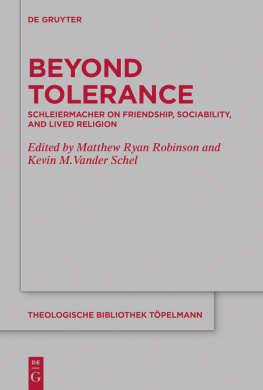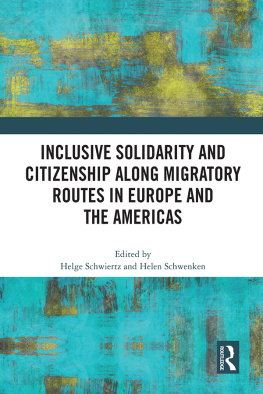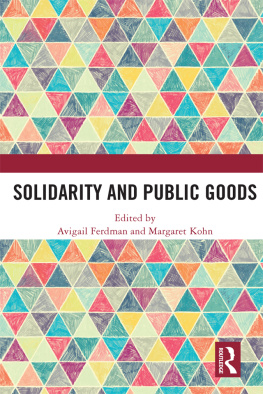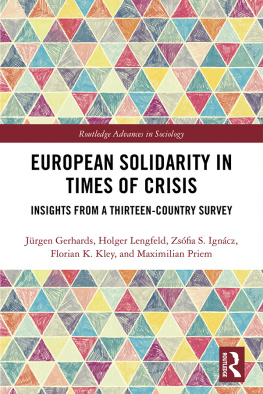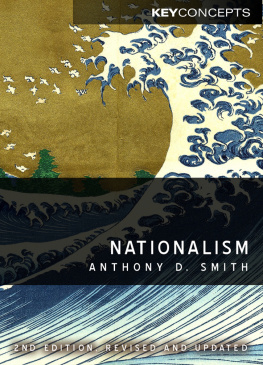1. Introduction
What is national solidarity and how do compatriots bond with one another? The first question is relatively straightforward: Although the definitions are multiple, national solidarity is generally understood as a form of attachment between compatriots that is considered beneficial for mutual cooperation and for legitimizing state power.
Focusing on this latter questionon the how rather than the whatthis book claims that at the heart of the national imagination lies a pervasive belief in the magic of transforming strangers into friends; an overarching meta-narrative that brings together the institutional logic of the statethat which prescribes cooperation between anonymous citizensand the mythic logic of the nationthat which considers interaction between citizens as a modern incarnation of tribal fraternal ties. The result is a deep cultural structure of strangers-turned-friends (and ultimately friends-turned-siblings) that gives meaning to institutional social life and places it within the contours of the national state.
This symbolic structure can be unveiled by studying from bottom-up social interactions in modern institutions where participants become increasingly competent in turning particular strangers into friends. People in modern societies live the greater part of their lives in a range of institutions which, regardless of their instrumental purpose, engender informal social ties. When strangers interact in clubs and cafs , sing in choirs , listen simultaneously to a live radio broadcast, participate as an active audience in a reality television show, or make friends through social media , they engage in mundane performances of sociability. When acts of sociability are staged in public, certain interactions distinguish themselves as intimate by excluding, teasing, and alienating others. At the same time, such public gestures of intimacy may tempt others to join in. Having participated in similar social clubs in the course of their lives and sharing partly overlapping social networks, compatriots acquire a sense of competence in making friends and gain reassurance in the ability of like-minded clubbersbut not othersto do the same.
The growing segmentation and differentiation of institutional life place increasing demands on individuals to negotiate sociability among strangers. Far beyond state-run institutions such as the military and public schools which are noted for their reinforcement of social cohesion, many, if not most, of our modern-day institutions operate as a social club of sorts in which a select group of strangers are expected to cooperate andwhether intentionally or inadvertentlybecome friends in the process. Since the industrial era, these institutionally mediated interactions have contributed to the social glue of modern mass society, not because they promote civic engagement or democracy , but because they encode and enact the promise of sacred friendship.
The expectation of turning strangers into friends is by no means limited to national settings. But with much of institutional and public life circumscribed (even when not directly controlled) by nation-states, these accumulated acts of friendship are likely to correspond to national boundaries and ultimately acquire national meanings through symbolic cultural processes. Thus, although sociologists have warned against the conflation of society with the nation-state known as the bias of methodological nationalism (Smith ), historically it is precisely this juxtaposition of modern social institutions and a global order of nation-states that renders the experience of sociability central to peoples sense of national attachment .
In this book, I present an empirical, interaction-centered research program for studying national solidarity through the lens of social club sociability. Sociability in social clubs consists of interactions between participants and spectators-turned-participants that span three levels of analysis: the interpersonal ties between individual members of the institution, the public staging of these ties in front of other members or non-members, and the collective ties between members of the organization as a whole. This translates into a particular research strategy for studying sociability both in everyday life and in public events through the interactionist mechanisms of public intimacy and emergent feelings of collective intimacy. Public intimacy refers to the ways in which members stage intimate ties in public in order to establish their exclusivity and, at the same time, tease selected spectators (but not others) to become confidants and, subsequently, participants in this relationship. Hence, by employing a complex interplay between exclusion and inclusion and between secrecy and disclosure, public intimacy operates as a bonding mechanism by way of seduction .
This interactionist mechanism operating in mundane institutional life can be examined against the backdrop of Durkheimian approaches to sacred ritualized events, understood as highly orchestrated collective action that departs from everyday life, and deemed central to the affirmation of collective identity (Mast , 137) underscores how collective action is structured by a relatively autonomous cultural realm operating through underlying symbolic binary codes and narratives. Accordingly, I call attention to the meta-narrative of strangers-turned-friends as a key cultural structure that gives collective-national meaning to feelings of solidarity.
In previous work (Kaplan ), I studied fraternal friendship as a key cultural trope for national attachment. In this work, I opted to tone down this emphasis on gender-based analysis in order to introduce other hitherto unexplored issues in the study of national solidarity .
To conclude, this research program offers a specific understanding of national solidarity as both a bottom-up process of socialization in the form of social club sociability and a top-down process of cultural interpretation that gives meaning to social life. This understanding comprises a three-layered model of national solidarity that includes the following elements.
- a.
Institutional setting . Nationally bounded modern institutions, from state organizations and civic associations to social media practices, operate as social clubs where unaffiliated individuals negotiate modes of cooperation through informal interactions of sociability and transform in the process into acquaintances and potential friends. Each social institution structures its own patterns and codes of sociability and presents a different manifestation of a symbolic meta-narrative of strangers-turned-friends associated with national solidarity.
- b.
Public and collective intimacy . The interpersonal ties that form between members of any given institution are inevitably managed, disclosed, and staged in front of a third party. This semi-public performance of intimacy is a dramaturgical mechanism that provides insiders with a sense of exclusivity and can, by the same token, also tease outsiders and tempt them to get involved. In this way, triads of public intimacy operate as rites of belonging: They can potentially turn spectators into participants and form the cornerstone for larger collectivities, resulting in feelings of collective intimacy. This emergent solidarity corresponds to Emile Durkheim s ([, 529) that is ideally accomplished in ritualized events. However, collective intimacy directs attention to the ways in which the ritualized performance reaffirms the existence of the community not only as a tangible body of individuals but also as a tangible network of confidants and accomplices who share mutual patterns of sociability learned through past experiences with public intimacy.



